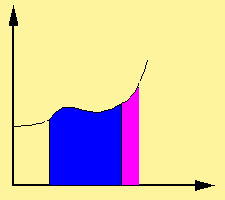
 Formal Definition of Limits
Formal Definition of Limits
 Formal Definition of Limits
Formal Definition of LimitsFor a function f(x),That may be quite a bit to swallow all at once. You might want to shake those epsilons and deltas from your head and take a step back. The limit is concerned with what f(x) looks like around the point x = a. The formal statement says that the limit L is the number such that if you take numbers arbitrarily close to a (or, values of x within delta of a) that the result of f applied to those numbers must be arbitrarily close to L (or, within epsilon of L).if and only if for each positive number
(the lowercase Greek ``epsilon"), there exists a positive number
(the lowercase Greek letter "delta") with the property that
One of the important things is that nowhere is the formal definition mention anything about the actual value of f(x) at x = a. The value of f(a) does not affect the limit, and may not even be defined.